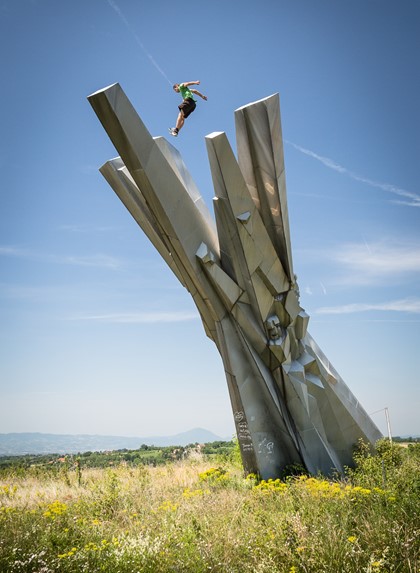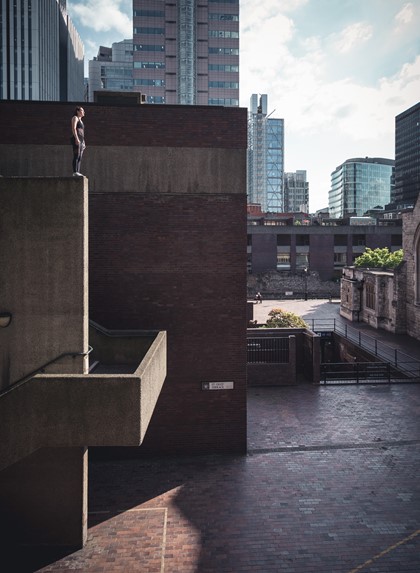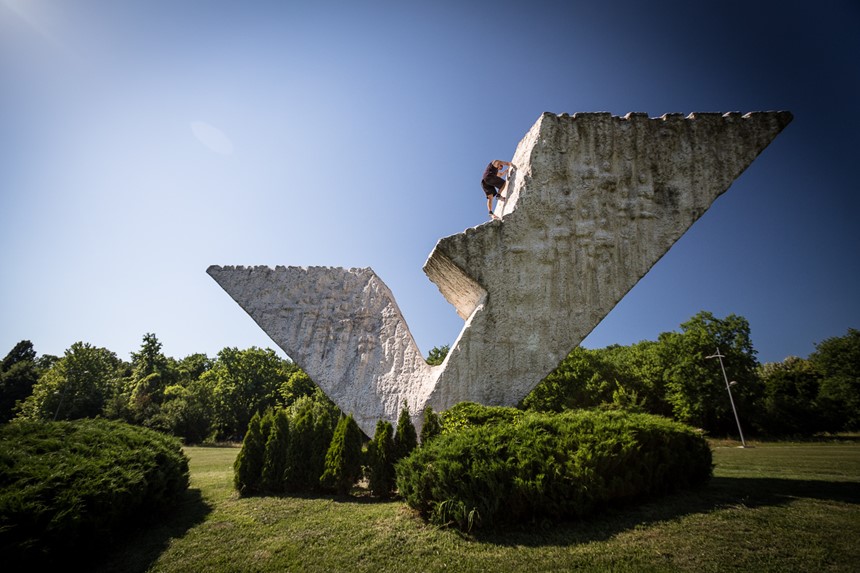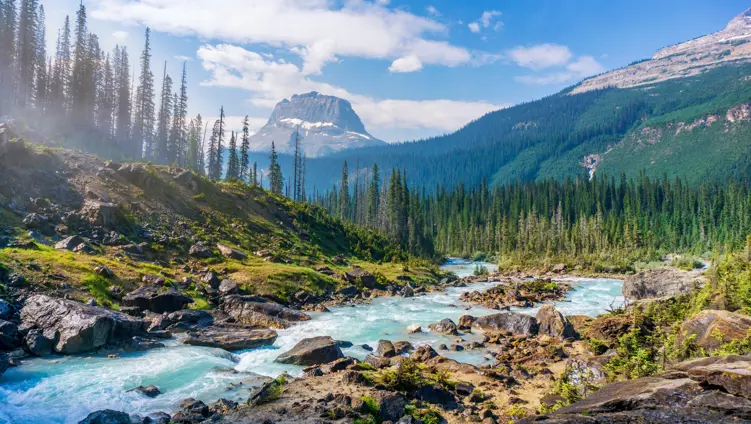Andy Day is a British photographer, parkour practitioner and climber. Most of his photographic work depicts parkour, but is infused by a wider interest in the sociology of urban space.

Andy Day is a British photographer, parkour practitioner and climber. Most of his photographic work depicts parkour, but is infused by a wider interest in the sociology of urban space.
Andy’s interests mean he “hangs out with a lot of people who just do weird things in the city.” Our conversation revolves around the significance of these weird things, including the sense of adventure they provide.
Andy recalls one particularly memorable escapade. In 2011, at 3 am one freezing November morning, Andy met a parkour athlete at London Bridge underground station. This was during what Andy remembers as a “golden age” of construction work in London which created a cityscape pocked with cranes and scaffolding structures - a trellis for what the parkour community knows as roof culture.
Their mission was to go buildering: the act of climbing buildings, typically without a rope. Often this means short, bouldering-inspired routes that vanish with the boulderer who envisaged them. But it can mean something larger. The route that morning was a 148m building near the Shard.
“He said we were climbing up the scaffolding or sneaking in the building to take the stairs,” Andy recalls. But as a lap of the building soon confirmed, the plan was in fact to climb the service lift - a vertical metal frame designed to transport construction goods to the roof - like a 148m ladder. No ropes, and places to stand and rest every ten metres. To use a climbing term, Andy had been sandbagged.
Midway up Andy’s foot slipped. A minor slip, but he froze. “This really odd feeling of exhaustion went through my entire body,” he recalls. “It was absolutely surreal. I've never felt anything like it before and never felt anything like it since. It was this realisation that I had really fucked something up, and there was no way out of this.”
His pride and few minutes of positive affirmations eventually inspired Andy to the top, only to discover that, after getting the intended shot, they would need to descend the same way. “No idea what I was letting myself in for,” he muses. “But yeah, it was a really valuable experience actually, a really fulfilling experience.”
Photos from Former (left) and Andy's London Bridge climb (right) courtesy of Andy Day


Danger is inherent to parkour and buildering. “There have been moments where I've thought: ‘Am I about to photograph someone’s death?’” Andy says. “You try not to let those thoughts creep into your mind too often, and obviously you don't verbalise the thought during the shoot either. That’s not ideal: ‘Hey, are you about to die?’”
But the thrill is not Andy’s primary motivation. In any case, since moving from London to the Fontainebleau forest south of Paris, he has buildered less and climbed and bouldered more. He is more interested in the cultural value of the parkour community - an interest reflected in his most ambitious photographic project to date: Former, an exploration of ex-Yugoslavia’s otherworldly World War Two monuments, or spomeniks, through parkour.
Initially Andy was rightly sceptical about climbing monuments. But research and the perspective of the Croatian and Serbian parkour communities reassured him. Spomeniks occupy a contested cultural place, allowing room for Former’s primary aim: “creating narratives that don’t get bogged down by the complexities of history and instead introduce values that are fundamental to parkour: openness and connectedness, and a shared attitude of exploration, where boundaries are opportunities to discover things rather than points of division and difference.”
Collaboration between the Croatian and Serbian parkour communities - not a given, in light of historical tensions between the countries - is testament in itself to the supportive, non-competitive, grassrootsy parkour ethos. And though incomplete, Former has generally been well received.
One critique, from a respected academic, saw Andy’s work as an example of spomeniks being exploited for social-media sensationalism. Although Andy understands this concern, he feels the criticism betrays an unfair reading of the intentions behind both Former and many spomeniks themselves.
“When people say they look like alien structures, they aren’t being dismissive,” Andy says. “Often they are actually tapping into what the architects, the designers, the artists behind these structures were trying to achieve.” One of those architects, the late Miodrag Živković, even has one of Andy’s photographs on his wall, depicting a parkour athlete on a spomenik he designed.
Photo from Former courtesy of Andy Day

Former uses the idea that reappropriating urban space through adventure can, in the right contexts, empower people and foster cultural change. “A lot of our sense of who we are, how much power we have, how much freedom we have and how much control we have over our lives is related to how freely we can move,” Andy argues.
Fantastical evidence of this is found in “Hollywood” depictions of rooftop culture: heroes scaling and hanging from rooftops, silhouetted and quasi-superheroic. But a comparable effect is possible in the everyday realm.
Not that parkour is straightforwardly the disempowered reclaiming their rightful space. Far from it. “Yeah, it takes back control of the city,” says Andy of this potential, “but who is doing the taking back? Who is actually asserting their control? Of course, it's white, middle class, athletic, able-bodied men. Like, how fucking subversive is that!”
Photos from Former (left) and parkour adventures courtesy of Andy Day


The more radical impact of parkour, buildering and urban exploration generally is its capacity to empower people often excluded from or constrained in urban spaces. To be clear, Andy has no interest in preventing the men he describes (including himself!) from enjoying parkour. But the key questions, he suggests, are whose bodies parkour is representing, who it is empowering and where the gaps are. To his mind, the number of people from traditionally marginalised groups participating in parkour would be a much better metric of community success than the number of sponsored athletes, Youtube views or Red Bull films.
For this reason, he has been particularly pleased about the rise in women’s parkour events. “They are by far my favourite events to photograph,” he says. “The atmosphere is just so different.” Andy avoids generalisation here, but it seems fair to observe that women’s adventure spaces tend, on average, to be more avuncular and less egotistical - a sentiment echoed in our interview in this month’s Edition with Hetty Key from the Women’s Trad Festival.
A similar concern with power informs Andy’s role as a photographer. He has recently been waging an unexpected protest against photos of sexually exploited children in the Magnum Photos archives. Andy recognises this campaign is professionally inadvisable, but the photos are indefensible. “Postcolonialism and patriarchy have shaped photography and how so much of the world has been portrayed,” he says. Magnum has announced a review, the significance of which is unclear, but Andy notes that it reflects reckonings happening elsewhere, like National Geographic, where John Edwin Mason has reviewed their archives and presentation of people from different cultures.
Photo from Former courtesy of Andy Day

But a question remains here: beyond a feeling of community, identity and athletic possibility, what is the value in ‘reclaiming’ urban spaces? How else does it reallocate power?
We don’t have time to delve into these questions, but threads come to mind. Research shows that interactive, social space increases wellbeing, trust and local connection in cities. The increasing privatisation of seemingly public space poses a particular threat here, constraining our agency in urban environments. Parkour might provide an urban analogue to Nick Hayes’ trespassing adventures which are spearheading a campaign in support of our right to roam in the UK.
Indeed, the conversation around who is able to use the outdoors safely is increasingly common in the adventure community, for example in Maxwell Ayamba’s piece about BAMER participation. But attention to the same problem in urban environments is less common, even though adventure can and should play a mediating role. After all, who knows the fruitful directions in which a culture of allowing more people to creatively engage with urban environments might lead.
This interview is tied to our resolution to cover urban adventure more during 2021. If you know about a story showing the power of adventure in cities and towns, we’d love to hear about it, either as a tip or a pitch.


